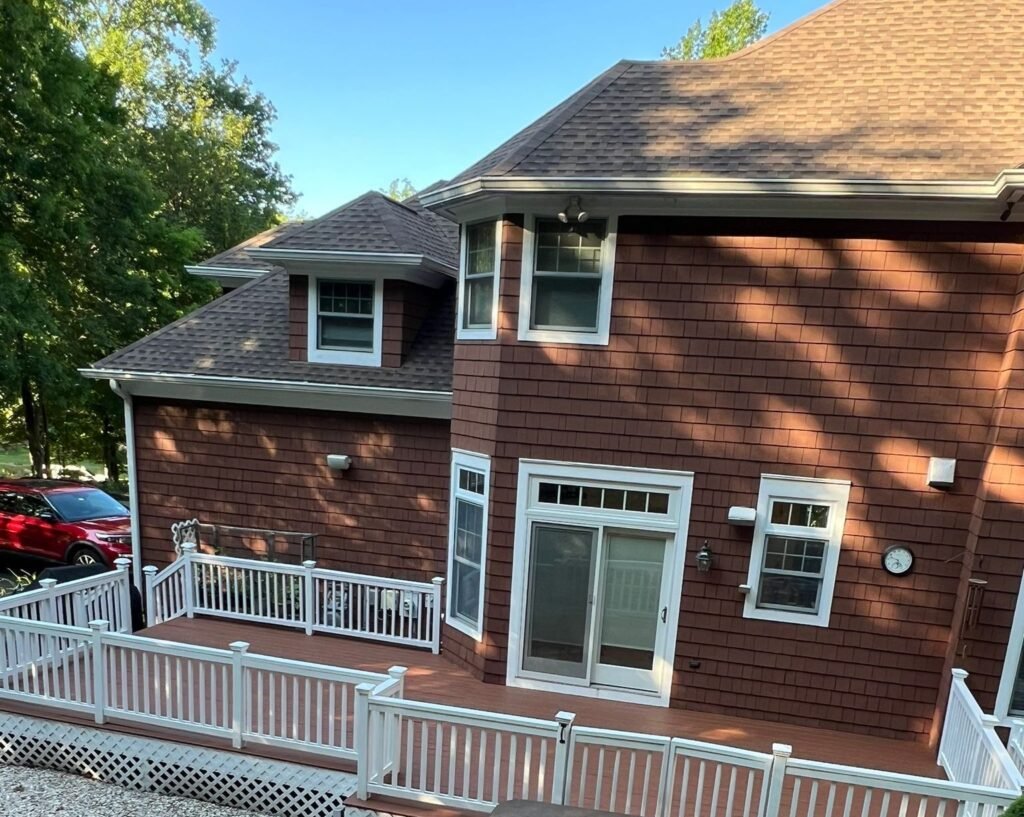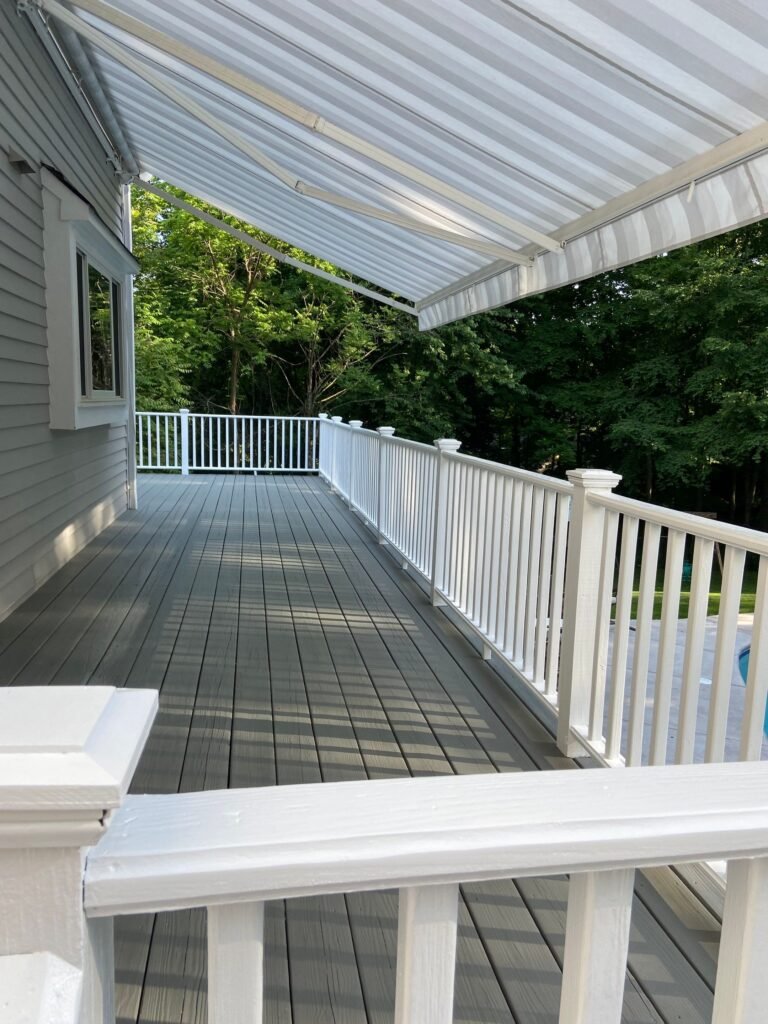Your deck is an extension of your living space, but it’s constantly exposed to harsh weather, UV rays, and foot traffic. Protecting it with paint or stain is crucial for its longevity and appearance. Understanding the lifespan differences and factors affecting durability will help you make the best choice for your outdoor oasis.

Paint vs stain durability comparisons
Both paint and stain protect wood, but they do so differently and thus have varying lifespans and aesthetics.
Deck paint: 5–10 years
- Durability: Deck paint forms a solid, opaque film on the surface of the wood. This thick layer provides excellent protection against UV rays and moisture, often lasting longer than many stains.
- Aesthetics: Paint completely covers the wood grain, offering a uniform color. This is great for hiding imperfections or creating a specific aesthetic.
- Lifespan: A high-quality deck paint, properly applied and maintained, can last 5 to 10 years before needing a full repaint.
- Challenges: Paint is more prone to peeling, cracking, and chipping, especially in high-traffic areas or where moisture gets underneath. When it fails, it usually requires extensive scraping and sanding to prepare for recoating.
Stains: recoat in 2–5 years
Stains penetrate the wood rather than sitting on top, and their durability depends on their opacity:
- Clear/Transparent Stains: Offer minimal color and allow the natural wood grain to show through completely. Provide some UV and moisture protection, but typically need recoating every 1-2 years.
- Semi-Transparent Stains: Add a hint of color while still allowing most of the wood grain to show. Good UV protection. Generally last 2-3 years.
- Semi-Solid/Semi-Opaque Stains: Offer more color coverage, hiding minor imperfections, but still allow a subtle hint of grain. Very good UV protection. Lifespan of 3-4 years.
- Solid Stains: Provide an opaque, paint-like finish that hides the wood grain but still penetrates the wood. Offer the most UV protection among stains. Can last 3-5 years.
- Challenges: Stains generally don’t peel like paint (they tend to fade or wear away). When recoating, preparation is usually simpler (cleaning and light sanding), but the overall recoating frequency is higher than paint.
Factors that affect durability (prep, foot traffic, weather, product)
Regardless of whether you choose paint or stain, several factors critically influence its lifespan:
- Surface Preparation: This is the most crucial factor. Proper cleaning, sanding, and repair of the deck surface ensure optimal adhesion and durability. Skipping prep leads to premature failure.
- Foot Traffic: High-traffic areas (stairs, main pathways) will show wear much faster than low-traffic zones.
- Weather Exposure:
- UV Radiation: Direct sunlight is the biggest enemy, causing fading and breakdown of the finish.
- Moisture: Rain, snow, and standing water lead to rot, mold, and finish deterioration.
- Temperature Fluctuations: Extreme hot and cold cycles cause wood to expand and contract, stressing the finish.
- Product Quality: Higher-quality paints and stains contain better pigments, resins, and additives that provide superior protection and last longer. Investing in a premium product pays off.
- Application Quality: Proper application techniques (e.g., thin, even coats, correct drying times between coats) are vital.
Ideal application conditions
- Clean & Dry Deck: The deck must be thoroughly cleaned and completely dry before application. This often means waiting 2-3 sunny days after washing.
- Temperature & Humidity: Follow manufacturer recommendations, typically 50-85°F (10-30°C) with moderate humidity. Avoid direct hot sun during application, as it can cause paint/stain to dry too quickly.
- No Rain in Forecast: Ensure no rain is expected for at least 24-48 hours after application.
Maintenance and touch-up routines
- Regular Cleaning: Periodically sweep and wash your deck to remove dirt, debris, and mildew.
- Inspect Annually: Look for signs of wear, fading, or minor peeling/chipping.
- Touch-Ups: For paint, spot-treat small areas of chipping or peeling. For stain, clean and reapply to worn areas as needed.
- Address Issues Promptly: Don’t let minor wear become extensive damage.
When to repaint vs refinishing
- Repaint/Recoat: If the existing paint or stain is still mostly intact with minor wear, a thorough cleaning and a fresh coat of the same product can often extend its life.
- Refinish (Strip/Sand): If the paint is extensively peeling, cracking, or the stain is very unevenly worn, it’s usually best to strip off the old finish (via chemical strippers or heavy sanding) back to bare wood. This provides a fresh, clean surface for a new application and ensures the best possible adhesion and lifespan of the new coating. This is a more extensive and costly process but often necessary for a lasting result.


Genesis Pro Painting specializes in deck painting and staining, ensuring your outdoor space is not only beautiful but also protected against the elements. We handle meticulous surface preparation and apply high-quality products, maximizing the lifespan and aesthetic appeal of your deck.
